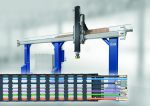Soul Machines and Florence to assist tobacco users quit during Covid-19
Soul Machines has joined the World Health Organisation’s (WHO) Access Initiative (AI) for Quitting Tobacco to help share WHO’s life-saving information during the Covid-19 pandemic, combat misinformation, reduce the risk of Covid-19 and help over one billion tobacco users quit. Florence, the WHO’s first digital health worker, was created using Soul Machines technology and WHO technical guidance, with support from Amazon Web Services and Google Cloud. Florence will help provide clarity and expel damaging myths around Covid-19 and will specifically address smoking and its consequences – heart disease, cancer, diabetes, and respiratory diseases – all of which are comorbidities with Covid-19. With Florence, smokers can engage with a digital health worker to develop a quit plan and rely on a trusted source anytime and anyplace, to help them feel confident to reach their quit goals. Initially available in English, Florence will, over time, be available in all six official UN languages. Smokers are more exposed to the Covid-19 virus and are at greater risk of having severe disease complications. Although around 60% of the 1.3 billion tobacco users globally want to quit, only 30% of them have access to tools that can help them quit. As a digital health worker for WHO, Florence will help give the increasing numbers of people globally who have a desire to quit smoking during the Covid-19 pandemic a new, safe, easily accessible and engaging channel. Florence can scale seamlessly and to talk to many individual people around the world and is available 24/7 with no wait times, as a simple video stream from the cloud to any device. This frees up critical people resources and provides a user-friendly solution to an overwhelming demand for clear, concise information that can be relied on. Florence will always be available when needed and ready to engage to […]









